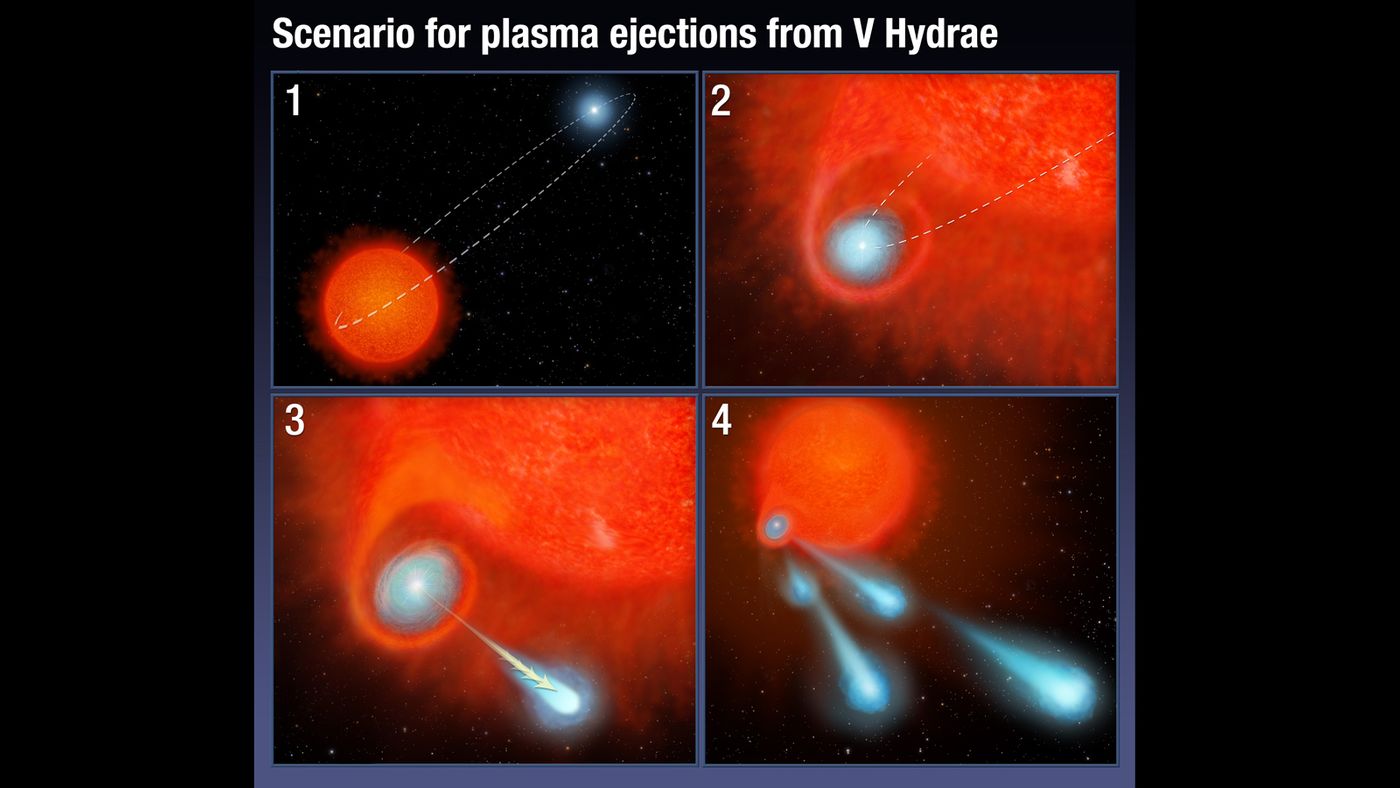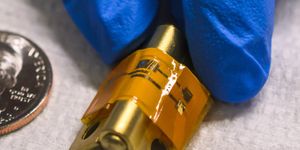This Star System is Shooting Plasma Cannonballs Into Space
NASA’s Hubble Space Telescope found something really strange inside a star system 1,200 light years away. The host star, a huge red giant named V-Hyrade, is dying. But that’s not what makes it interesting.
Rather, NASA says they’ve observed huge plasma ‘cannonballs’ being ejected from the star at extremely fast rates of speed, and the findings appear in The Astrophysical Journal.

Image Credit: NASA, ESA, and A. Feild (STScI)
These plasma balls are reportedly twice the size of Mars and are extremely hot. They’re moving so quickly that it would only take only 30 minutes for one to travel from Earth to the Moon, a distance of 238,900 miles.
Explaining what’s causing these plasma balls to shoot into space is proving to be the real challenge. This isn’t something astronomers see all the time, but careful observations may explain what’s really going on here.
The first thing we have to remember is that red giants are not powerful stars like they once were. At this stage in their life, they’re dying and losing their nuclear fuel needed to continue going on, so it’s hard to say where these powerful balls of energy are coming from.
One idea is that this is actually a binary star system, and a companion star might be orbiting V-Hyrade in a type of elliptical motion that swings around the red giant’s atmosphere in such a way that it’s causing these plasma balls. This theory comes from the fact that astronomers have dated this activity as far back as 1986.
"We knew this object had a high-speed outflow from previous data, but this is the first time we are seeing this process in action," said Raghvendra Sahai of NASA's Jet Propulsion Laboratory in Pasadena, California and lead author of the study.
"We suggest that these gaseous blobs produced during this late phase of a star's life help make the structures seen in planetary nebulae."
These super-heated energy blobs are about twice as hot as the surface of the Sun, at approximately 17,000 degrees Fahrenheit. As soon as they get into space, they start to cool and expand before they’re no longer viewable in the visible light spectrum.
Sahai also suggests a model of a companion star with an accretion disk, which could explain the plasma balls entirely.
“This model provides the most plausible explanation because we know that the engines that produce jets are accretion disks,” Sahai explained in the statement.
“Red giants don't have accretion disks, but many most likely have companion stars, which presumably have lower masses because they are evolving more slowly. The model we propose can help explain the presence of bipolar planetary nebulae, the presence of knotty jet-like structures in many of these objects, and even multipolar planetary nebulae. We think this model has very wide applicability.”
"This accretion disk engine is very stable because it has been able to launch these structures for hundreds of years without falling apart," Sahai continued.
"In many of these systems, the gravitational attraction can cause the companion to actually spiral into the core of the red giant star. Eventually, though, the orbit of V Hydrae's companion will continue to decay because it is losing energy in this frictional interaction. However, we do not know the ultimate fate of this companion."
Although it seems V-Hydrae has been doing this for a long time, there’s still no direct evidence that this theory is 100% spot-on. Nevertheless, it’s the best theory we have so far. The only way to learn more is to continue to study the system and hope that more clues pop up out of the wood works.
Source: NASA/JPL








